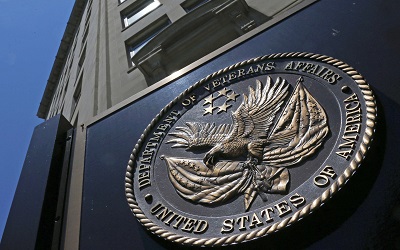Hubbard Radio Washington DC, LLC. All rights reserved. This website is not intended for users located within the European Economic Area.
Feds’ health care costs to increase by 3.2 percent in 2015
The Office of Personnel Management released the latest costs for the Federal Employees Health Benefits Program Tuesday, which show an increase of less than 4 pe...
Many federal employees can expect to pay, on average, 3.2 percent more for health care in fiscal 2015.
The Office of Personnel Management Tuesday released the latest costs for the Federal Employees Health Benefits Program (FEHBP) for non-Postal Service employees, and the standard option, which is the most popular choice among feds, will increase by less than 4 percent for the fourth year in a row.
In 2014, premiums rose on average by 3.7 percent, which was up from 3.4 percent in 2013.
OPM came to the 3.2 percent average by factoring in the government’s share and the federal employee’s share of the premium increases. On average, federal employees will see an increase coming out of their paychecks of 3.8 percent. The government will pay 3 percent more for health premiums. Taking those numbers together, OPM uses its formula to come up with an average increase of 3.2 percent.
There’s always some disagreement between OPM and employee unions on exactly how much the rates are increasing. For example, many employees actually saw an average increase of 4.4 percent last year, while the government saw only an increase of 3.7 percent.
“On average, FEHB Program enrollees with self-only coverage will pay $2.93 more each bi-weekly pay period, and enrollees with family coverage will pay $6.89 more,” OPM said in a release. “Premiums for Health Maintenance Organizations will increase an average of 4.0 percent, while Fee-for-Service plans will see an average increase of 3.1 percent.”
OPM also announced average premium increases for the Federal Employees Dental and Vision Insurance Program (FEDVIP). The premium for dental coverage will increase 1.7 percent and vision benefits will go up by 1.5 percent.
All price changes will take effect on Jan. 1. Federal employees and retirees can make health care coverage decisions during Open Season, which runs from Nov. 10 through Dec. 8.
“This is the lowest consistent set of low premiums the FEHPB has had since the early 1990s. We’re very encouraged by that,” said John O’Brien, OPM’s director of Health Care and Insurance, Tuesday during a briefing with reporters in Washington. “Not only are we happy for the program, it seems some of the competitive changes put in place by the Affordable Care Act seem to have some spillover effect that is also helping the FEHBP. ”
O’Brien said most of the increase is due to employees choosing more expensive plans.
The 3 percent increase for the government and 3.8 percent increase for federal employees doesn’t average 3.2 percent because of how OPM applies the formula to figure out the costs.
O’Brien said for example, with about 60 percent of all feds using Blue Cross, Blue Shield, those workers are paying more for their health care because Blue Cross, Blue Shield’s premiums are higher than the weighted average.
O’Brien said for those feds using Blue Cross standard coverage, they will see an increase of $3.21 for self coverage and $8.33 for family coverage — both are per pay period increases.
OPM says there are 257 plan choices governmentwide in 2015, including four new ones. That’s one more plan to choose from as compared to last year. Of those 257 plans, OPM says 11 are open to all federal employees and retirees. The FEHBP has an annual spend $48 billion and serves more than 8.2 million federal employees, retirees and family members.
Non-postal feds should feel pretty good about their costs as compared to postal service employees.
OPM says postal rates will increase by as much as 19 percent for employee contributions, but total premiums will increase only by 3.4 percent.
John Foley, OPM’s director of Planning and Policy Analysis, said there are several reasons why the Postal Service increases seem so high.
“As in years past, the employee contribution is a negotiated amount. It’s negotiated with the different Postal bargaining units. It’s not as uniform as for other federal employees,” he said. “In the last year, the employees’ share has gone up through the bargaining process, in general. There’s a little bit of the artifact of the comparison that makes it difficult to use the employee numbers because the mix of employees in the category last year is different than the mix of employees in the category this year. The amount of the increase appears greater than it actually is.”
Foley said Postal employee contributions are now based on a government contribution cap of 80 percent of total cost of the program, down from 83.5 percent last year.
OPM Director Katherine Archuleta set the tone for the FEHB program changes in 2015 and beyond back in March at the annual Carriers Conference.
“As you see in this year’s Call Letter, these are priorities for FEHBP in the coming year,” she said. “High on our list is managing prescription drugs. Prescription drugs represent 25 percent of total FEHBP spending. We need to continue to focus on ways to make prescription drugs as affordable as possible while ensuring that FEHBP members are getting access to safe, high quality medications. We all know that it’s not enough to take care of people when they get sick. We must do all we can to keep the federal workforce well. I know that FEHBP carriers offer a wide variety of wellness programs. But our employees are not participating in these programs in the numbers they should. We need to work together on this. In the coming year, I urge you to look at your programs and to work with us to come up with incentives, processes and innovations that will encourage employees to take advantage of these programs. We will collaborate with you to get the word out to the federal workforce that wellness programs work.”
FEHBP carriers also are planning to implement the Self-Plus-One enrollment category, starting in 2016.
O’Brien said carriers are heeding OPM’s request to focus on wellness.
“Of the top 20 largest plans in the FEHBP, about 40 percent of them offered an incentive. Many offered about $50 or less to fill out the HRA,” he said.
The HRA is the health assessment survey. Blue Cross, Blue Shield, for example is offering employees $50 to take the survey and $35 to reach their wellness goals.
The other major change is around flexible spending accounts and dependent care accounts. O’Brien said there are two new features for flexible spending accounts.
“We have a lower annual minimum of $100. That lowers the bar for people going on. The attraction for us is this is a good benefit for folks who have any out of pocket costs. This is a pre-tax benefit,” he said. “By dropping it to $100, we avoid people having the sticker shock of ‘if I don’t use my benefit, I’ll leave money on the table.’ We hope this will induce some new people to try these flexible accounts, and hopefully as they get comfortable, they will use them more in the future.”
The second change is letting employees carry over up to $500 from the previous year in their FSAs.
“There will no longer be a grace period. In previous years, you were not allowed to carry over, but you could still incur expenses until March 15 of the following year. The rules for flexible spending accounts are set by the IRS. You could either do the carry over or you can have the grace period,” O’Brien said. “The rules changed allowing the carry over last October. We made no decision. We left the grace period in place the last year of the FSA Feds because we wanted to study it more so we did a survey of enrollees in FSA Feds. The preference among people who use the benefit was that they’d rather have the carry over than the grace period.”
Archuleta said this is an important change for the program.
“It will align health plans with other federal benefits that OPM currently offers — the employee-pay-all dental and vision benefits. And, it allows an employee or retiree to choose a less expensive option which covers only the enrollee and one family member,” she said.
Reaction about the 3.2 percent average increase is mixed. The National Active and Retired Federal Employees Association continued to beat the drum of federal employees paying more for healthcare in light of little to no pay raises over the last few years.
Joseph Beaudoin, president of NARFE, said in a statement that Congress should appropriate sufficient funding to provide a pay raise next year for federal civil servants.
The National Treasury Employees Union was less combative over the increase, saying in a release it was lower than previous years.
“NTEU will continue to press for actions to reduce premiums for federal workers and retirees by supporting legislation that would significantly strengthen federal oversight of the prescription drug benefits,” said NTEU President Colleen Kelley in a statement. “At the same time, NTEU is working to reestablish fair federal pay increases to help federal families meet increasing costs in health care and other living expenses.”
RELATED STORIES:
Federal health premiums to rise 3.7 percent in 2014
Health premiums up 3.7 percent—or is that 4.4 percent?
OPM wants to keep FEHBP premium increases in check
Copyright © 2024 Federal News Network. All rights reserved. This website is not intended for users located within the European Economic Area.
Jason Miller
Jason Miller is executive editor of Federal News Network and directs news coverage on the people, policy and programs of the federal government.
Follow @jmillerWFED





